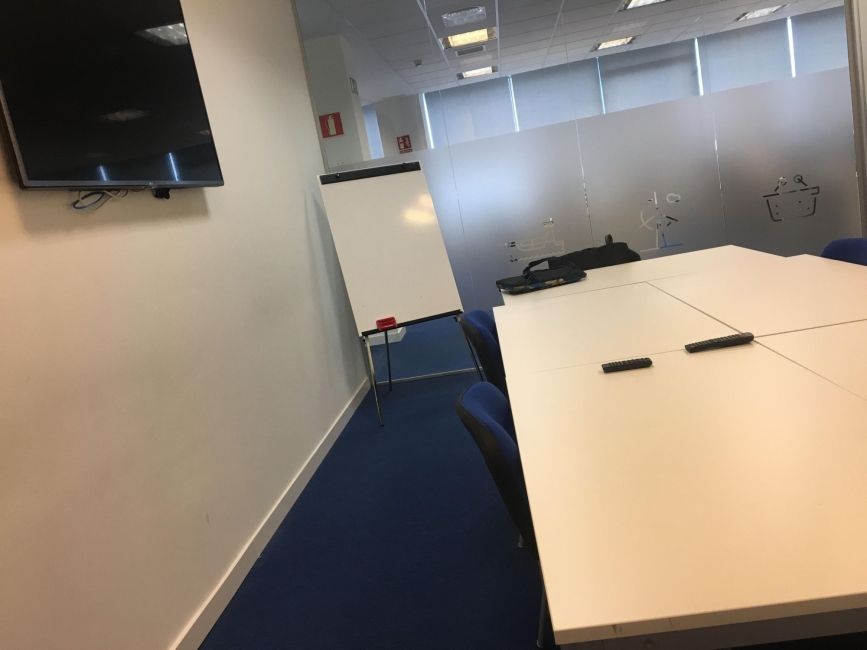Differences Between Teaching Adults and Children
If you are like me, you are coming into this program with no experience teaching adults. I had taught plenty of children before the program through museum internships, tutoring, and volunteering abroad. Obviously I knew I couldn’t use the same lesson plans I had made for children, apart from that I didn’t really know what to expect. From participating in the Teach in Spain Professional program with CIEE I have noticed quite a few differences. Some are obvious, others are really subtle. Here are some of the differences you can expect:
How They Act When They Are Not Engaged In Class
When children aren’t engaged, they act out. They try to derail the class to make it more interesting. In contrast, adults get quiet. You’ll ask them a question and get a one word answer. In this scenerario, it’s very easy to think you have to keep talking to get them engaged. I have found this has the opposite effect. My students who aren’t engaged are comfortable having me do all the talking; when this happens they aren’t learning anything.
To keep adults engaged, use a variety of activities. Don’t always bring in an article to class, bring in TED talks and listening activities. Throw in a good roleplay or have them ask each other discussion questions. Also remember that sometimes your students have other things on their mind. They are thinking of picking their kids up from school, the project they are behind on, or taking their cigarette break after class. When this happens, it is very difficult to engage your students, as hard as you try, sometime they just have other things on their mind. Just make sure they keep talking, even if it’s just short sentences.

Adults Want More Specific, Specialized Classes
When I have taught children, I have found that general vocabulary and grammar classes do the trick. This is not the case for your adult students. They are either using English at their job or it is likely that they will use it someday. If not, they want English because they travel a lot and English is more common than Spanish. Or their children are learning English and they want to help them. You will find each of your students has a specific reason for learning English, find out what that reason is and make sure their needs are being met.
For example, one of the companies I work at was going through a merger and several of my students weren’t sure if they would be able to keep their jobs. A lot of jobs in Spain might want to interview in English, so we had a few classes where we practiced interview questions in English. I had other students watch the ‘interview’ and give feedback to help improve their answers. These kind of skills are what adults want to learn in class. You may teach classes on giving presentations, composing emails, or communication in a telephone conference.
The Stakes Are Higher For Adults
While it is important for children in Spain to learn English, adults are the ones feeling the crunch the most. Several of my students have told me that most jobs here require an advanced understanding of English. One of my students even told me his boss said he would only promote him if his English improves. For a lot of Spaniards, knowing English means job security. You will see ads for business English academies and classes everywhere. This is because it is so necessary to be able to speak English in Spain’s workforce nowadays. Don’t let this overwhelm you, but remember it when you are planning your lessons for each week.
Adults Generally Know Their Grammar (But They Don’t Always Know How to Use it)
You will find that most of your students focused on grammar during their many English lessons before yours. As such, you won’t spend much time teaching grammar rules to them; they already know them. Instead, make sure they know how to use the grammar they know. For example, I taught a class on irregular past tense verbs a few weeks ago. All of my students completed the worksheet perfectly, but when we got to the fluency activity, they were making mistakes left and right. Focus on using them, avoid teaching the rules because that may seem redundant.
While teaching adults is very different from teaching children, it is not too difficult to adjust from one to the other. One thing that is nice about teaching adults is they generally want to learn. They will tell you what they need to learn and communicate about what works for them and what doesn’t. You will find each of your students is different and will learn to adjust class accordingly.
Related Posts

TWICE with CIEE: Kayleigh in Spain (PART 2)
Kayleigh is a CIEE alum who participated in CIEE's Teach in South Korea program AND CIEE’s Teach in Spain Volunteer program! CLICK HERE to read her experience in Korea. WHY... keep reading

CIEE Volunteer Spotlight: Meet Layla!
Where are you from? What was your academic background or career before teaching abroad? I am Canadian, specifically Québécoise. In Quebec, students are required to attend community college (CEGEP) before... keep reading


